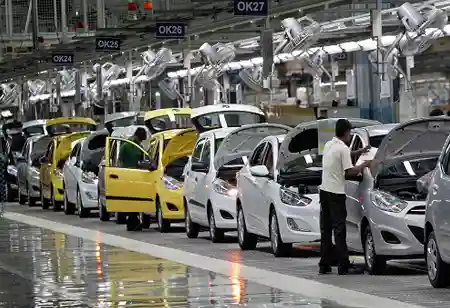Thank you for Subscribing to Auto Business Outlook Weekly Brief
Tackling Auto Lenders' Hurdles: A Comprehensive Approach
In a business landscape fraught with challenges, the auto lending sector has encountered its own set of obstacles.

By
Auto Business Outlook | Tuesday, August 15, 2023
Stay ahead of the industry with exclusive feature stories on the top companies, expert insights and the latest news delivered straight to your inbox. Subscribe today.

Fraud has rapidly become a formidable adversary in the auto lending sector, manifesting in various forms such as document fraud, identity theft, and synthetic identity creation. The vulnerability lies in the reliance on physical documentation and the delayed integration of digital systems, allowing false information and stolen identities to slip through approval processes.
Fremont, CA: In a business landscape fraught with challenges, the auto lending sector has encountered its own set of obstacles, ranging from payment collection complexities to rising costs. In this comprehensive guide, we delve into the core challenges that auto lenders currently face and offer expert insights on effectively navigating these hurdles.
Car Loan Fraud: A Growing Threat
Fraud has rapidly become a formidable adversary in the auto lending sector, manifesting in various forms such as document fraud, identity theft, and synthetic identity creation. The vulnerability lies in the reliance on physical documentation and the delayed integration of digital systems, allowing false information and stolen identities to slip through approval processes.
To combat this menace, investing in cutting-edge front-end technology is crucial. By consolidating the entire application process into a seamless digital platform, the likelihood of fraud decreases significantly. Online applications not only fortify your defenses but also enhance operational efficiency, ultimately boosting application completion rates.
Navigating Increased Interest Rates
The landscape of auto loans is undergoing a transformation, with the expectation of rising interest rates and subsequent growth in average monthly payments. As the Federal Reserve persists in raising rates to achieve its inflation target, borrowing costs escalate, potentially steering consumers towards used cars rather than new ones. Despite this challenge, a surge in the supply of used vehicles presents an opportunity for lenders to encourage refinancing. A strategic focus on both new and refinancing customers can help mitigate the impact of increased interest rates.
The Demand-Supply Mismatch and Accessibility
The pandemic-induced disruptions in manufacturing have led to a demand-supply mismatch, driving up prices for both new and used cars. Amidst broader economic inflation, vehicles remain an essential commodity, emphasizing the continued necessity for vehicle financing.
Navigating Debt Recovery with Empathy
The economic turmoil stemming from the pandemic prompted lenders to extend support to clients facing financial difficulties. However, delinquencies in vehicle loan repayments continue to rise. Balancing empathy with risk reduction poses a challenge for auto lenders in a volatile market.
Competing in a Disrupted Landscape
The rise of fintech disruptors has reshaped the auto lending landscape, intensifying competition. Staying competitive necessitates the implementation of seamless digital application and account management experiences. Collaborating with fintech partners to harness their lead generation capabilities while outsourcing backend processes can provide a winning strategy.
Moreover, proactive portfolio assessment offers an avenue for maintaining competitiveness. Identifying borrowers with loans originating four to five years ago presents an opportunity for providing financing assistance for their next vehicle purchase or exploring refinancing options.






